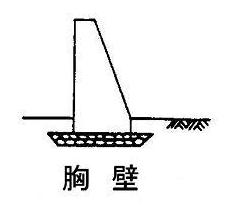- Yokohama-shi Top Page
- Business
- Menu by field
- Harbor
- Port Business Glossary
- Harbor Business Glossary:
Here's the text.
Harbor Business Glossary:
Last Updated August 5, 2024
A B C D E F G H I J K L M N O P Q R S T U V W X Y Z
-Ah- -- -- -- -- -- -- -- - La- --wa-
--
- Main routes
- In general, long-distance routes connecting Japan with North America and Europe.
- Certificate of delivery of equipment
- Prepared by a shipping company, leasing company, or CY operator as documents proving the delivery of containers and other equipment. If there is any damage to the equipment, please indicate so. One of the important documents to record the status of the container at the time of delivery, as the delivery of the actual container is performed only in the appearance state.
- Dangerous goods (dangerous cargo)
- General term for explosives, combustibles, and other substances that affect the human body. The definition and handling of hazardous materials are determined mainly by the Ship Safety Act and the Port Regulations Act, and on land by the Fire Services Act. Internationally, it is stipulated in the IMDG CODE (International Maritime Dangerous Goods Regulations) established by the International Maritime Organization (IMO), and in Japan, the "Hazardous Material Ship Transport and Storage Regulations" which fully ratified the regulations are enacted as a subordinate regulation under the Ship Safety Law.
- Dangerous goods quay
- Generally, it refers to a quay for cargo handling dangerous goods. The public Bath in Yokohama Port does not have a dedicated Bath handling hazardous materials, but the cargo is carried out within the range of the allowed hazardous materials cargo capacity based on the quay classification of A to C specified for each Bath.
- Regulations on transport and storage of hazardous materials
- Promulgated on August 20, 1957 in accordance with the Ship Safety Act. The Ministry of Transport Ordinance came into effect on November 1. Carriage of dangerous goods by ship. Japan's basic laws and regulations concerning storage. In 1979, IMDG CODE, an international rule for hazardous materials, was adopted and revised significantly in 1979, the provisions stipulated by the IMO regarding individual transport of hazardous materials.
- Stuttering (draft)
- The depth of the hull that sinks below the surface of the water as the ship floats on the water.
- Passenger boat
- Ships that mainly transport passengers. However, in addition to passengers, when cargo is loaded and unloaded, it will be a passenger ship according to port statistics. Generally, due to differences in the applicable provisions related to the Ship Safety Act under international treaties, a passenger capacity of 13 or more is referred to as a passenger ship or a passenger ship.
- Captain (man)
- (1)Captain (2) → CAPTAIN(Character And Pattern Telephone Access Information Network system)
- Career
- Carriers, businesses that have actual means of transportation (ships, trucks, aircraft, etc.) and take luggage from shippers and actually transport them.
- Gabage (gargage)
- Living waste from the kitchen and living room of the ship.
- gang
- The unit of workers in ship cargo. In a conventional ship, one gang consists of about 11 to 13 people, consisting of hatch units. A container ship consists of about eight gang members, consisting of gantry cranes.
- gangway
- A group of port workers (groups) is called gangs, and the bridge used by gangs to cross from land to ships is called gangways. In turn, it also refers to the ferry bridge for passengers. 1999.
- Forced water destination (compulsory pilot)
- In areas designated by the Waterfront Law Enforcement Order, such as Yokohama Port and Kobe Port, when operating a large ship, in principle, a pilot must be boarded. Such a form of a water destination is called a forced water destination, and that area is called a forced water destination.
- Communal sea loss
- Damage or expense arising from a ship or a disposition that has been made into cargo to avoid communal danger in the event of a maritime incident.
- Joint ship distribution
- Several shipping companies operating on regular routes share their respective fleets on their regular routes and cooperate with each other. We are working to reduce operating costs and improve service to shippers.
- Joint delivery
- A system that realizes mixed loading of delivery performed by companies in some way and integrates delivery of multiple companies. There are patterns such as joint delivery, joint purchase, joint shipment, and joint collection.
- Chest wall (apet)
- For the purpose of preventing wave droplets or preventing danger, it may refer to a wall installed at the top of a seawall, embankment or breakwater, or a structure containing a chest wall.

- Modern ship
- A ship that has advanced equipment and aims to reduce the number of crew members. Due to its high economic efficiency, the number has increased since around 1981 and has become the core of Japanese ships. In 1979, the Seafarers System Modernization Committee, an advisory body to the Seafarers Bureau of the Ministry of Transport, was established, and basic experiments on a small number of capacity were started using experimental ships. A stage 18 and B stage 16 were put into practical use, and stage 14 C stage 14 were tested by the end of 1987. Also, in 1988, there was a plan for 13 people in stage D, but it was not implemented because it shifted to a pilotship experiment. (Mr.) Pioneership
Inquiries to this page
Port and Harbor Bureau General Affairs Department General Affairs Division
Telephone: 045-671-2880
Telephone: 045-671-2880
Fax: 045-671-7158
Email address: kw-somu@city.yokohama.lg.jp
Page ID: 325-304-388







